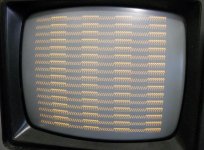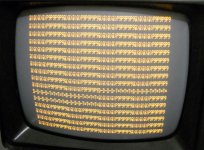TRS-Ian
Veteran Member
Trying to fix a "spelling errors" problem on a Model I, usually you just replace a bad 2102 ... or 2 or 3....
I have a system open on my workbench trying to get a consistent @9@9 display, but every 8 columns the characters differ. I'll post a picture tonight.
So far I have removed all 6 2102s, only the graphic one is left in place. I've tried a different character generator. I've changed Z28, a 74LS174, which connects to pin 12 of each of the 2102s.
This one has me confused. Any thoughts?
Ian.
I have a system open on my workbench trying to get a consistent @9@9 display, but every 8 columns the characters differ. I'll post a picture tonight.
So far I have removed all 6 2102s, only the graphic one is left in place. I've tried a different character generator. I've changed Z28, a 74LS174, which connects to pin 12 of each of the 2102s.
This one has me confused. Any thoughts?
Ian.


